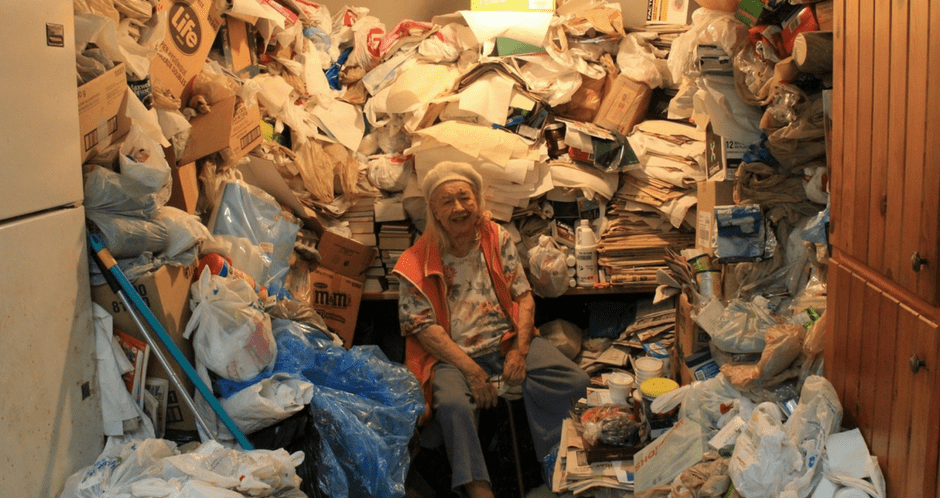
People who have a hoarding disorder gather items to the extent that it affects their daily lives and living environment and they are emotionally and physically unable to discard these items. According to the International OCD Foundation, hoarding disorder affects two to six per cent of individuals worldwide.
Hoarding is often more visible in older adults because they have had more time to collect and gather more things. It has been recently shown, however, that older adults with hoarding disorder also have some impairments in skills related to daily functioning. These older individuals are less able to understand and process new information as cognitive skills decline and therefore they are anxious when they try to throw items away and hold on to items that others would discard because of these feelings.
There are many misconceptions around “hoarders”. For one, they are not cut-off from society, but instead many are high-functioning, socially valuable individuals who have issues with clutter. Just having clutter around a home does not mean that the individual is a hoarder, but instead the diagnosis comes when clutter begins to overtake the living areas of a home and make them unusable for living. This is also different from people who are collectors with neatly organised and displayed collections and from those individuals who unable to care for themselves and their surroundings.
Someone who hoards may exhibit the following symptoms and behaviours:
It is very difficult for people who hoard to distinguish between what is trash and what is valuable because they become so emotionally attached to everything. Hoarding can develop without any other symptoms of mental or emotional disorders, however, it is also commonly associated with obsessive-compulsive disorder (OCD), obsessive-compulsive personality disorder (OCPD), attention deficit/hyperactivity disorder (ADHD) and depression.
People hoard because they believe that an item has sentimental value, is useful, or someone may miss it at some point. They may believe that the item is unique or irreplaceable or that it will help jog their memory in the future. If they just cannot decide where to put it, they keep it instead. There is a difference though between keeping a truly sentimental item and keeping an item that is trash. For instance, an old postcard from a deceased relative may have real sentimental value, but a used tissue does not. The person with hoarding disease cannot distinguish between the worth of these two items.
Developing hoarding disorder may be a condition all on its own or a symptom of another disease state or mental health condition. It is important that the person consults with a professional to determine the root cause. Once the individual admits they have a problem, the embarrassment and ongoing isolation and social anxiety issues often make it difficult for them to seek treatment. To aid this person in getting help, know the importance of seeking help, but take small steps to help them as the ongoing disease progression may have a serious impact on them.
While all individuals who have a hoarding disorder are at risk of negative effects, the impact on older individuals is more devastating. They are at a greater risk for falls, fire, effects from mould growth, poor hygiene and nutrition, and medical problems due to unhealthy or dangerous conditions. Besides social isolation, these individuals are also at risk of food contamination or problems with their medications. Rodent infestations further impact safety in their homes. Their disorder can affect their overall health with elevated cholesterol levels, arthritis, sleep apnea and of course, social isolation.
Know that hoarding affects other people besides the person who has the disorder. Family members often become angry or resentful as they fail to understand the disorder. It is important that all family members be aware of the impact to everyone and work to find help for their family member and themselves as soon as possible to avoid all of the negative impacts of the disease.
Disclaimer: Please be aware the above article is merely information – not advice. If users need medical advice, they should consult a doctor or other healthcare professional.